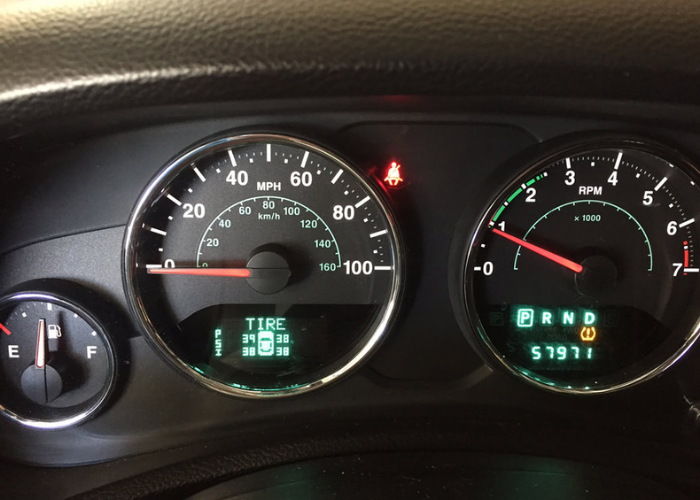
Check Tpm System Jeep
As a proud owner of a Jeep, you know the importance of keeping your vehicle in peak condition. That’s why it is essential to regularly check the TPM system of your Jeep. TPM stands for Tire Pressure Monitoring, and it is an integral part of your Jeep’s overall safety and performance.
Overview of the TPM System in Jeep Grand Cherokee
The Tire Pressure Monitoring System (TPM) in the Jeep Grand Cherokee is an advanced system designed to help drivers maintain safe and optimal tire pressure. This system works by monitoring tire pressure and alerting drivers when tire pressure is not within the manufacturer’s recommended range.
The TPM system comes standard on all Jeep Grand Cherokees and can be accessed through the instrument cluster or through a dedicated button on the steering wheel. The system can also be accessed through the Uconnect™ system.
The TPM system in the Jeep Grand Cherokee is designed to alert drivers when the pressure in one or more tires is 25% below the manufacturer’s recommended pressure. If the vehicle is stationary, the system will sound a chime and display an indicator light on the instrument cluster.
If the vehicle is in motion, the system will display an indicator light and sound a chime. The indicator light will remain illuminated until the tire pressure is corrected. Additionally, the TPM system can be used to check the tire pressure of all tires at once.
This is done through the Uconnect™ system, which allows drivers to check tire pressures without having to leave their vehicles. This is a valuable feature, as it allows drivers to ensure they are maintaining the correct tire pressure without having to stop and manually check each tire.
Types of TPMS
When it comes to understanding the different types of TPMS, or Tire Pressure Monitoring Systems, it is important to know what type of system is installed in your Jeep. All Jeep models come with either a direct or indirect TPMS, both of which monitor and maintain your tire pressure.
A direct TPMS will measure the pressure of each individual tire and alert you when the pressure becomes too low. An indirect TPMS system, on the other hand, will measure the overall air pressure in the tires and alert you when the pressure is too low.
Both systems have their own advantages and disadvantages, so it is important to know which type of TPMS is installed in your Jeep. By checking your TPMS system, you can ensure that your tires are properly inflated and your safety is not compromised.
What TPM Does
TPM, or Tire Pressure Monitoring System, is an important safety feature that is included in most modern Jeep vehicles. The TPM system keeps track of the air pressure in all four tires, alerting the driver when the pressure is too low.
This system helps to ensure that all four tires are inflated to the manufacturer’s recommended level of pressure, which helps improve fuel efficiency, handling, and braking. The TPM system also helps to reduce the risk of a tire blowout due to under-inflation or over-inflation.
The TPM system is composed of four sensors, one for each tire, which measure the air pressure inside the tire. These sensors are connected to a central module, which is typically located in the dashboard or center console.
The module receives the pressure readings from the sensors and is able to alert the driver when any of the tires is significantly under-inflated. The driver is then able to adjust the tire pressure as needed, ensuring their Jeep will be running safely and efficiently.
Procedures for TPM System Maintenance
Procedures for TPM System Maintenance: Checking the Tire Pressure Monitoring System (TPM System) on your Jeep vehicle is an essential part of regular maintenance. It is important to check your TPM system on all four tires at least once a month.
This will help you to know when your tires need air and when it is time to replace them. To check the TPM system, start by ensuring that your vehicle is parked on a level surface and that the engine is turned off. Next, use a tire pressure gauge to check the tires and make sure the pressure is at the manufacturer-recommended level.
If the pressure is low, fill the tires with air until it is at the correct level. Once all four tires are filled, use the TPM system to see if the tire pressure has been updated. If it has not, then you may need to replace the TPM sensors or the tires.
Finally, it is important to check your tires for any signs of wear or damage. If you notice any wear or damage, have your tires checked and replaced if necessary. With regular maintenance, you can keep your TPM system working properly and ensure that your tires are safe and in good condition.
Benefits of the TPM System
The Tire Pressure Monitoring (TPM) System in Jeep vehicles is an incredibly useful and beneficial tool for drivers. With the system, drivers can monitor their tires’ air pressure and temperature to ensure optimal performance.
The TPM System also alerts drivers when their tires are over- or under-inflated, which can help minimize wear and tear as well as increase fuel efficiency. Furthermore, the system can help inform drivers of any potential issues with their tires before they become a major problem.
By having this information at their fingertips, Jeep drivers can take the necessary steps to ensure that their tires are in good condition and that their vehicle is running safely and efficiently.
Common Problems Associated With TPM System
The Tire Pressure Monitoring System (TPM) in certain Jeep models is designed to alert drivers when tire pressure is low. However, this system can also be the source of various problems.
Common issues associated with the TPM system in Jeep models include false warning lights, tire pressure sensors failing or becoming unresponsive, and inaccurate readings. If you have a Jeep with a TPM system, it’s important to regularly inspect it for any issues.
If the warning light is on, the tires should be checked and the system should be analyzed for errors. If the readings are inaccurate, the tire pressure sensors may need to be replaced and the system may need to be reset.
It’s also possible that the system needs to be recalibrated or that the wiring and connections need to be checked for damage. Regular maintenance and inspection of your Jeep’s TPM system can help you avoid these common problems and keep you on the road safely.
Conclusion
Checking the TPM system in a Jeep is a great way to ensure that the vehicle is in good working order. It is important to check the TPM system regularly to prevent any potential issues with the tires or other components in the Jeep.
The TPM system can be checked in a few simple steps. First, the tires should be inspected for any visible damage or wear and tear. Next, the Tire Pressure Monitoring System should be inspected for any readings that do not match the manufacturer’s recommendations.
Finally, the tire pressure should be adjusted if necessary. By following these steps, drivers can ensure that their Jeep is running safely and efficiently.




